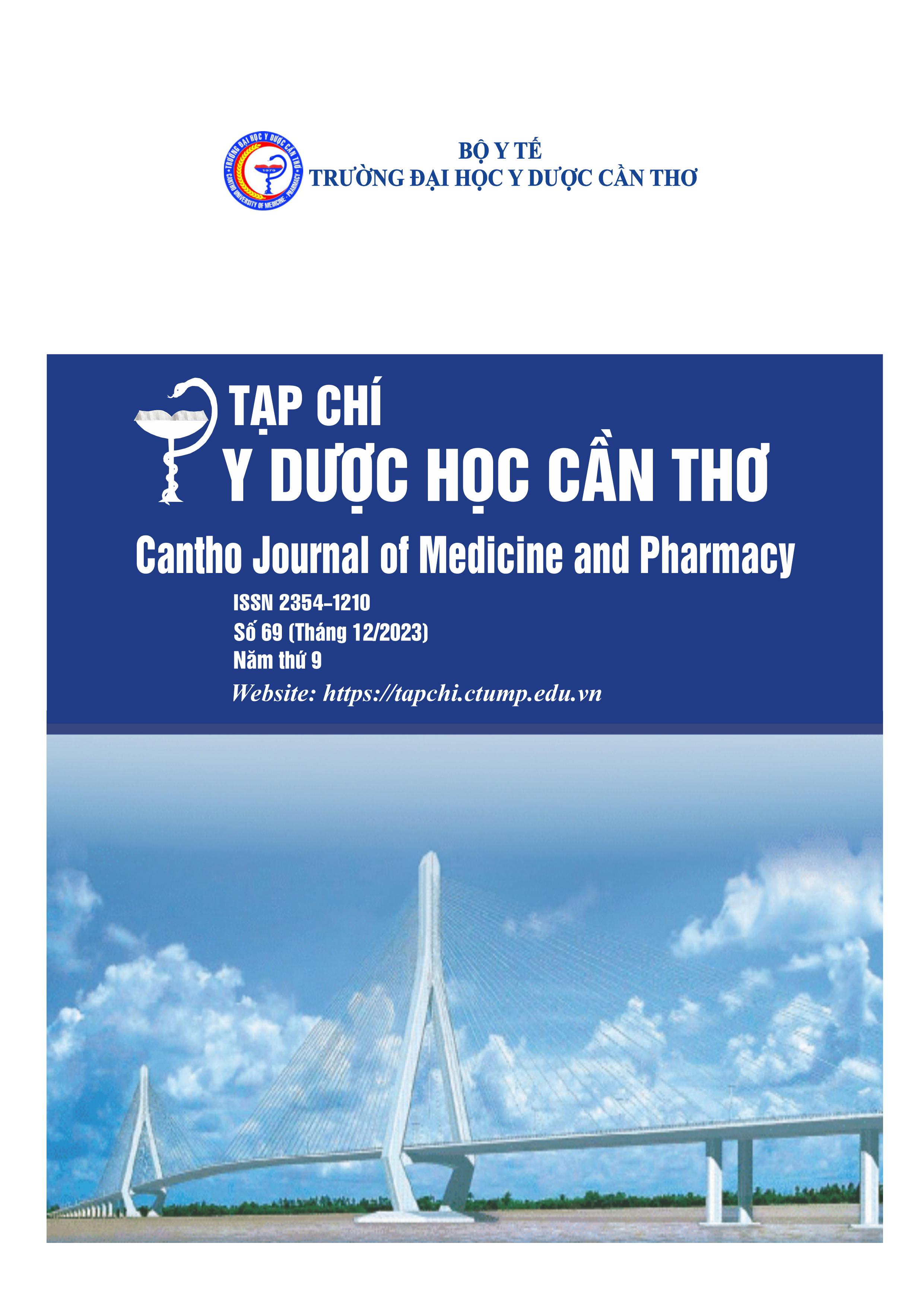A QUANTITATIVE ASSAY OF G6PD DEFICIENCY IN NEONATAL SCREENING AND DIAGNOSTIC PROGRAM AT CAN THO GYNECOLOGY & OBSTETRICS HOSPITAL FROM 2017 TO 2020
Main Article Content
Abstract
Background: Neonatal screening and diagnosis for Glucose-6-phosphate dehydrogenase (G6PD) deficiency help affected children approach early and appropriate treatments, which can lead them to have normal and healthy life in the future. Objective: To investigate the prevalence of G6PD deficiency and some associated factors among newborns. Subjects and methods: A crosssectional, retrospective descriptive study on 165,964 newborns in the neonatal screening and diagnostic program for 12 provinces of Mekong Delta at Can Tho Gynecology Obstetrics Hospital in the period from 2017 to 2020. Results: The prevalence of confirmed G6PD deficiency cases was 1.02%. Tra Vinh and Soc Trang are two provinces with the highest prevalence. The proportion of boys with the disease was 4 times higher than that of girls (OR= 4.93, p<0.001). Among the three major ethnicities of this region (Kinh, Khmer and Hoa), the Khmer and the Hoa have the highest proportions of the disease at 3.8% and 1.7%, respectively. The difference in ethnicity was statistically significant (p<0.001). When using G6PD deficiency classification based on enzyme activity as the assessment criteria, the study found that there was a difference in the distribution of groups in boys and girls (p<0.001). Conclusion: The proportion of G6PD deficiency in neonates undergoing newborn screening and diagnosis at Can Tho City Obstetrics and Gynecology Hospital was 1.02%. There is a relationship between G6PD deficiency and gender (more affected boys than girls), ethnicity (more affected Khmer and Hoa than Kinh). There is an association between gender and the levels of G6PD activity.
Article Details
Keywords
Glucose-6-phosphate dehydrogenase (G6PD) deficiency, newborns, screening
References
2. Jalloh A. et al. Rapid epidemiologic assessment of glucose 6 phosphate dehydrogenase deficiency in malaria endemic areas in Southeast Asia using a novel diagnostic kit. Trop Med Int Health. 2004. 9(5), 615-623, doi: 10.1111/j.1365-3156.2004.01237.x.
3. Verle P. et al. Glucose 6 phosphate dehydrogenase deficiency in northern Vietnam. Tropical Medicine & International Health. 2000. 5(3), 203-206, doi: 10.1046/j.1365-3156.2000.00542.x.
4. Matsuoka H. et al. Seven different glucose-6-phosphate dehydrogenase variants including a new variant distributed in Lam Dong Province in southern Vietnam. Acta medica Okayama. 2007. 61(4), 213-219, doi: 10.18926/AMO/32873.
5. Badens C. et al. Molecular basis of haemoglobinopathies and G6PD deficiency in the Comorian population. Hematol J. 2000. 1 (4), 264-268, doi: 10.1038/sj.thj.6200042.
6. Nuchprayoon I. et al. Glucose 6 phosphate dehydrogenase (G6PD) mutations in Thailand:
G6PD Viangchan (871G> A) is the most common deficiency variant in the Thai population. Human Mutation. 2002. 19 (2), 185-185, doi: 10.1002/humu.9010.
7. Tổng cục Thống kê, 2020, Kết quả toàn bộ Tổng điều tra dân số và nhà ở năm 2019, Nhà xuất bản Thống kê, Hà Nội, 57-58.
8. Khim et al. G6PD deficiency in Plasmodium falciparum and Plasmodium vivax malaria-infected Cambodian patients. Malaria Journal. 2013. 12(1), 1-10, doi: 10.1186/1475-2875-12-171.
9. Liu Z. et al. Chinese newborn screening for the incidence of G6PD deficiency and variant of G6PD gene from 2013 to 2017. Human Mutation. 2020. 41(1), 212-221, doi: 10.1002/humu.23911.
10. Louicharoen C. et al. Positively selected G6PD-Mahidol mutation reduces Plasmodium vivax density in Southeast Asians. Science. 2009. 326 (5959), 1546-1549, doi: 10.1126/science.1178849.


